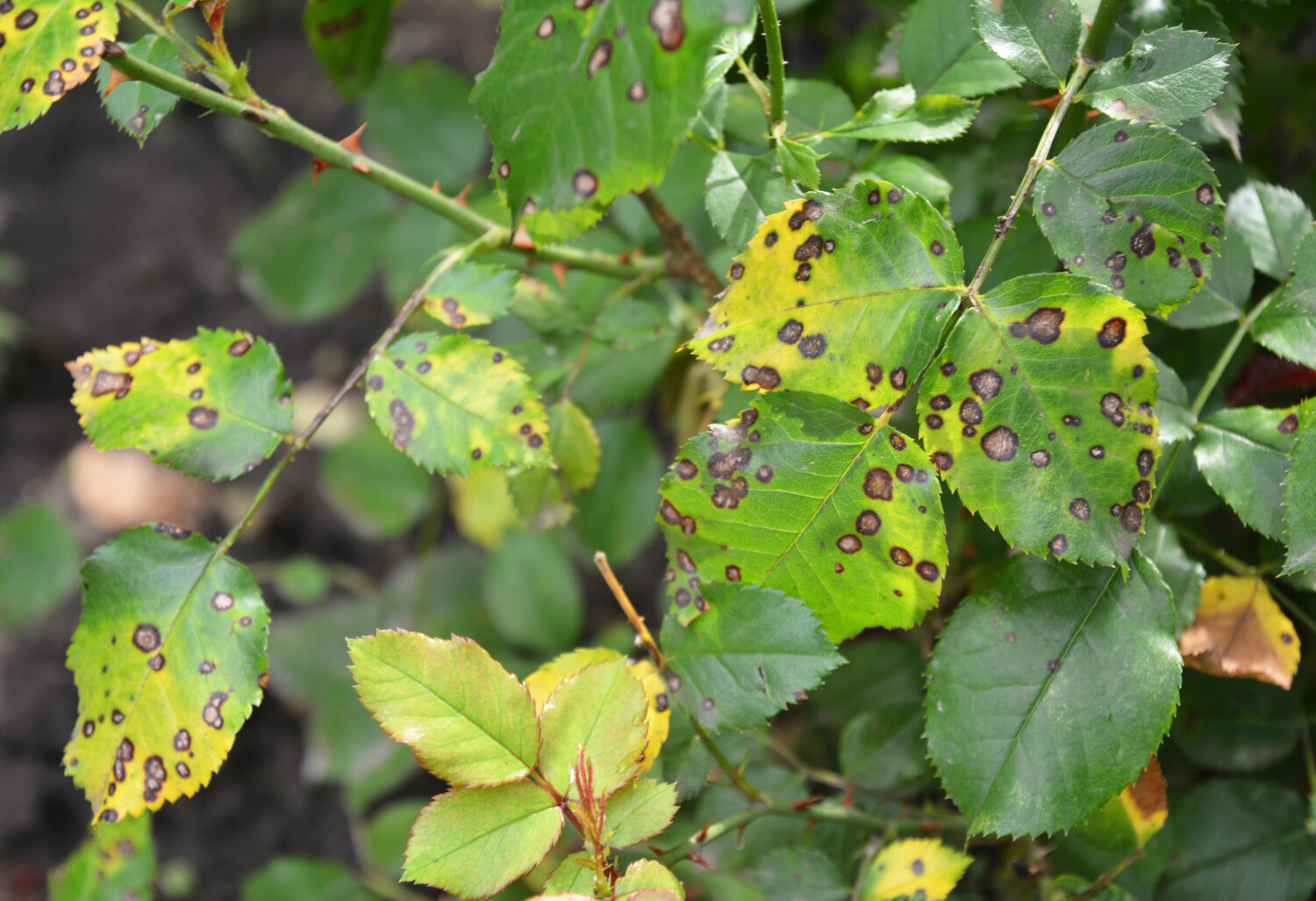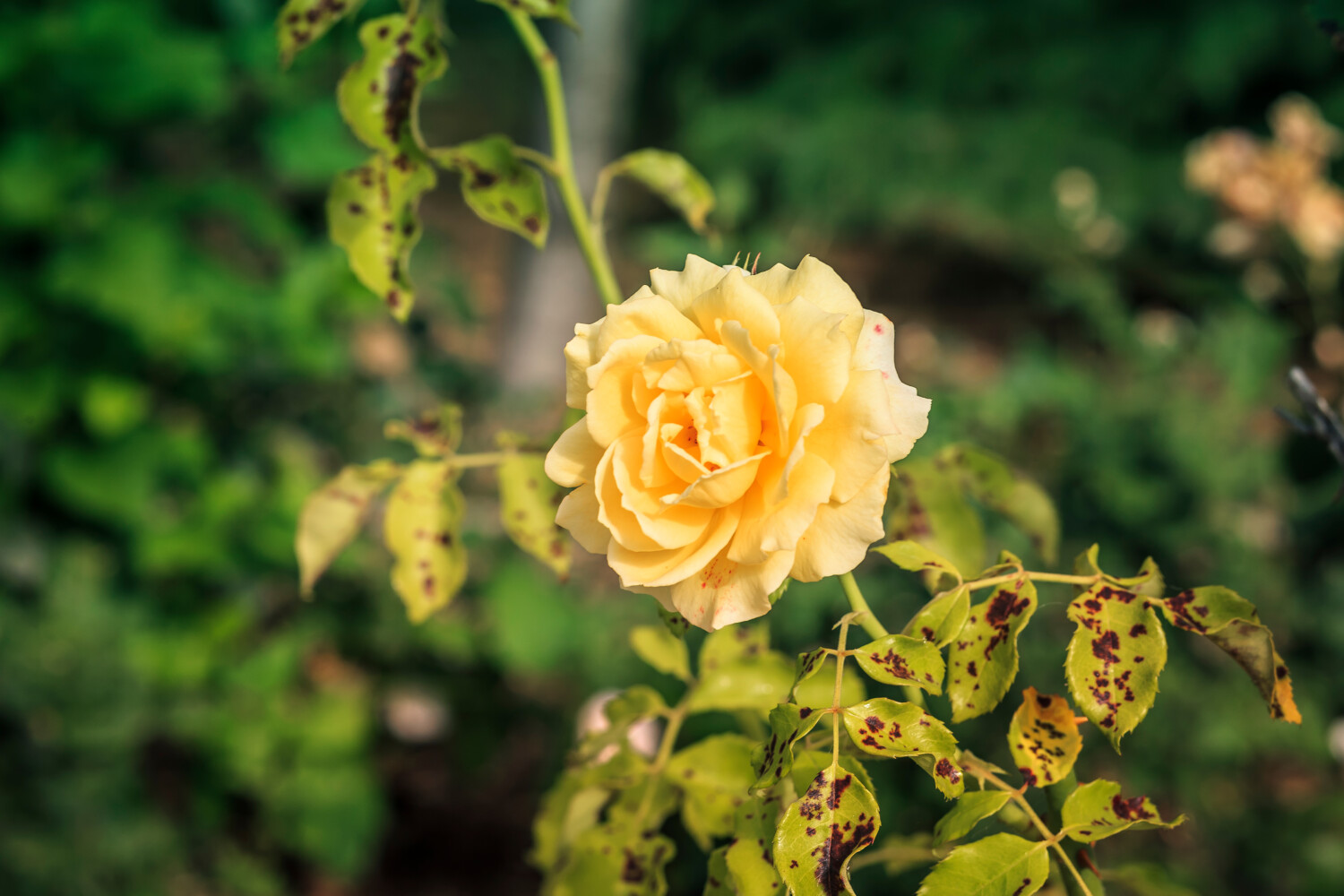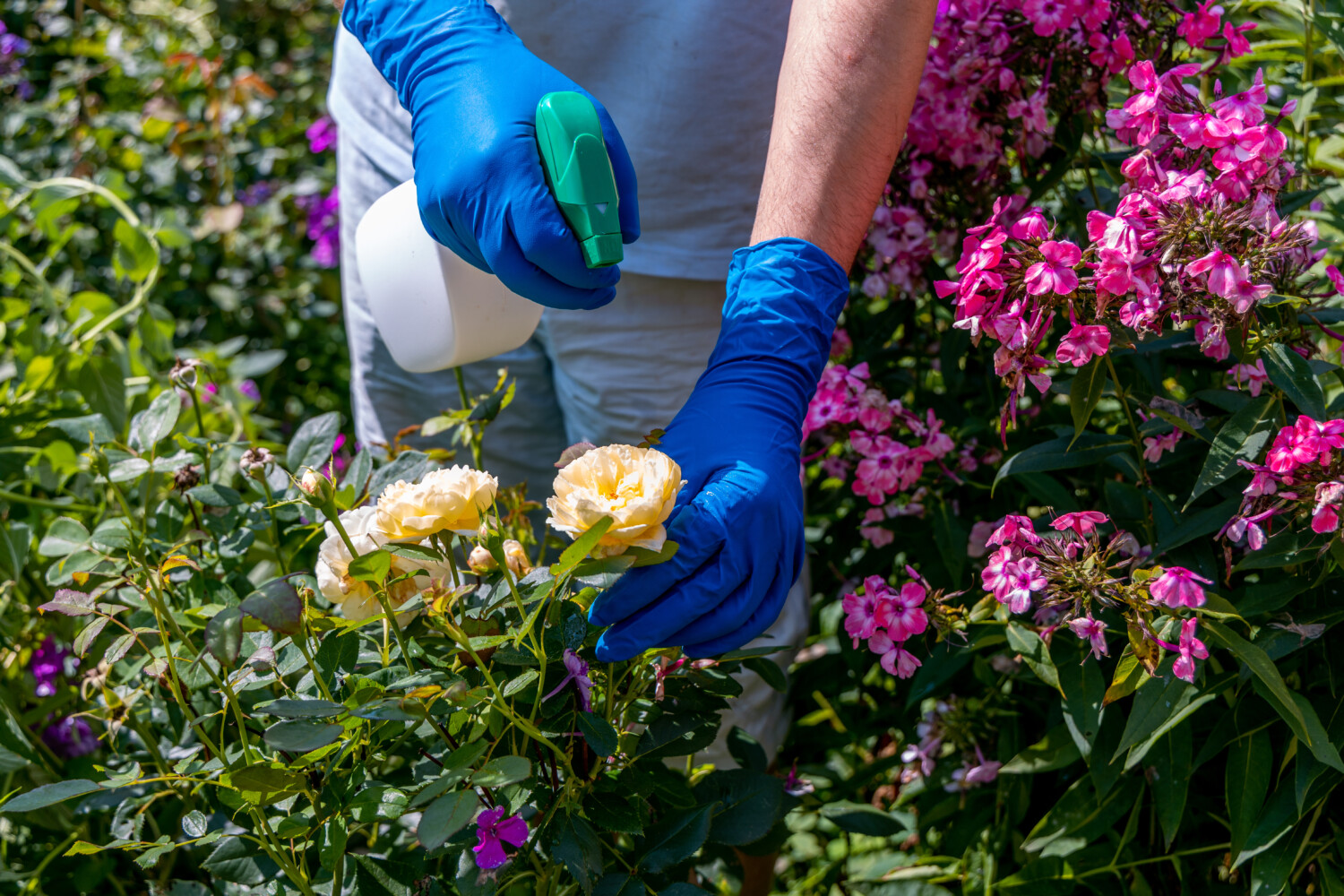Roses are a beautiful addition to any garden. They come in a gorgeous rainbow of colors and exude an intoxicating fragrance that’s impossible to resist. Suffice it to say, there are plenty of reasons why they’re the world’s most popular flower.
The good news is having a consistent supply of fresh-cut roses at your disposal is an easily achievable dream. While caring for rose bushes is relatively easy, there are certain pests and diseases that can stunt their growth that you should be on the lookout for.
One of those diseases is a fungal disease called a black spot, or diplocarpon rosae. Black spot manifests as — you guessed it — black spots on the leaves of the plant, which eventually turn the entire leaf yellow and cause it to fall off. The spots typically develop on the top side of the leaves, but experts explain you can also find them on the underside. The spots aren’t always perfectly round and may have a jagged appearance and/or be surrounded by a yellow ring.

Spots may appear as soon as the first young leaves emerge, and typically start at the bottom of the plant and migrate toward the top.
The spores from black spot tend to multiply in spring, and they make their way to plants via splashing water (either rain water or manual irrigation).
How Does Black Spot Affect Roses?
If black spot is not taken care of, many leaves can become infected leading to significant defoliation of the plant. While some defoliation is normal, excessive defoliation can prevent the plant from receiving the nutrients it needs to produce flowers.
How To Prevent Black Spot
While your rose bush can’t technically be cured once black spot has infected it, there are ways to manage it, and ultimately prevent it from happening altogether.
To start, if you notice your leaves are infected you should immediately remove them from the plant and toss them out. If you find any infected leaves on the soil, be sure to remove those as well. It’s recommended to not compost these leaves if you plan on using the compost in the rose beds, as spores can overwinter.

Because the fungus thrives in wet environments, do your best to eliminate moisture on the leaves as much as possible. This means limiting overhead watering as much as possible. If you do overhead irrigate, do it early in the day so the sun has a chance to dry off the droplets. Pruning may also help limit accumulation of moisture as it promotes more airflow around the leaves.
Fungicidal sprays are a good way to treat bushes that are already infected, and can either be made at home or bought at gardening stores. Bear in mind that treatment is not going to kill black spot but can slow down its growth and prevent your plants from dying. One popular option is neem oil, which is a natural fungicide that works systemically to help fight off infection.
Another option is a fungicide made of copper sulfate and hydrated lime called a Bordeaux mix. It comes in both powder and liquid forms and should be applied before leaves emerge in the spring.

If you want to prevent overwintering of spores, be sure to collect any dead leaves under your rose bushes in the fall, put down two to three inches of mulch and get rid of any diseased canes.
Lastly, making sure your rose bush is already strong and healthy will be its first line of defense against any diseases. To ensure optimal health, be sure your plants are in a place where they are getting plenty of sunlight throughout the day, and make sure to water them weekly.
This story originally appeared on Simplemost. Check out Simplemost for additional stories.


